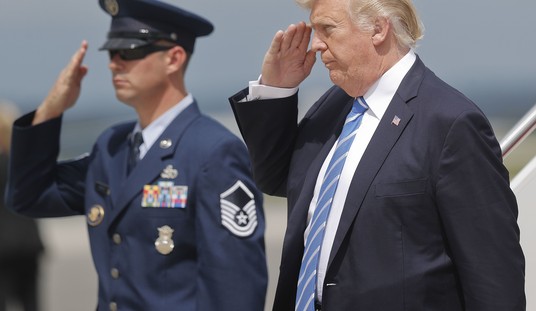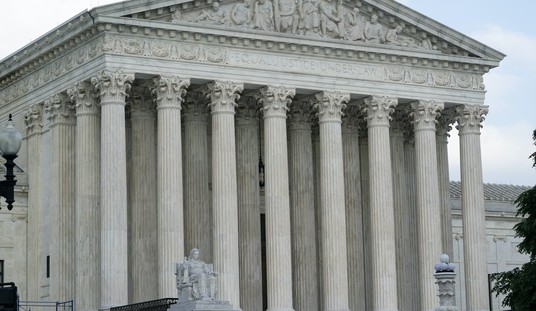How did thirteen colonies, with a barely functioning central government and a thrown-together, underfunded and poorly supplied army of constantly fluctuating size and composition, win the Revolutionary War? One reason was the colonies’ ability to rely on their common citizens to supplement the Continental Army with local militia. I’ve looked previously at the demographic and physical conditions and foreign alliances that shaped the war and the generals who led the armies. Let’s conclude this tour of the American Revolution with the militia.
The Militia: Americans then and now have had a romantic attachment to the citizen militia, epitomized by the Massachusetts “minutemen.” The importance of the militia as both a bulwark against tyranny and a line of national defense was, of course, famously the backdrop for the Second Amendment and other militia-related clauses in the Constitution (including allowing Congress to arm them and the President to command them at need “to execute the Laws of the Union, suppress Insurrections and repel Invasions”). Yet it was ultimately the Continental Army, not the militia, that had to do the bulk of the work needed to win the war. Nonetheless, the story of the American victory cannot be told without the militia.
Massachusetts: The militia’s finest hour came at the beginning, before there was a Continental Army: Concord and Bunker Hill. At Concord, in April 1775, the sudden appearance of the Massachusetts militia in significant force, firing largely from behind the cover of trees and stone walls, drove the (mostly inexperienced) redcoats back to Boston with surprising casualties. At Bunker Hill two months later, Massachusetts militia entrenched largely on high ground and firing from behind fortifications and stone walls inflicted a staggering casualty rate of almost 50% on the British regulars (even higher among the officer corps); the militia then beat a mostly orderly retreat when they were finally overcome. Those two battles left the British besieged in Boston, where they would remain for nearly a year until dislodged by Henry Knox’s artillery in March 1776. Bunker Hill also traumatized the British command, haunting their thinking about attacks on entrenched positions for the rest of the war. When the Continental Army was assembled to carry on the siege, much of its manpower and officer corps was drawn from the militia, including key leaders like Knox and Nathanael Greene. Moreover, the artillery that liberated Boston had been seized by militia in 1775 when Ethan Allen and Benedict Arnold, leading the Vermont militia (the Green Mountain Boys) in an expedition supported by Massachusetts and Connecticut militia, captured the lightly-defended Fort Ticonderoga. And without the militia, the army in 1775 would have been unarmed. The Continental Army being chronically short on supplies and having no official, standard weapon, recruits early in the war fought with whatever guns they brought to the army, either their own or those supplied by the state governments – but while that system was essential to forming an army from scratch, Washington found it unsatisfactory to carry on the war. As a 1981 U.S. Army study described the situation:
It was the policy of the Continental Congress in 1775 to “hire” arms, which meant encouraging each new soldier to bring his own gun, a practice that had been common in militia service. Having established this policy, Congress then left the task of equipping the troops to the Commander in Chief. More often than not, however, the men arrived at camp without arms. When Washington undertook to form a Continental Army from the forces before Boston in 1775, he initiated the first of several measures designed to arm his troops. He began by seeking to retain for the use of the new Continental force the muskets that the men hurrying to the defense of their country had brought to Cambridge. He ordered that no soldier upon the expiration of his term of enlistment was to take with him any serviceable gun. If the musket was his private property, it would be appraised, and he would be, given full value for it. All arms so taken and appraised were to be delivered into the care of the Commissary of Military Stores. To make doubly sure that the weapons would be retained for Army use, Washington threatened to stop the last two month’s pay due a soldier if he carried away his gun.
+++
Among the factors contributing to the shortage of arms in the spring of 1776 was the carelessness of the soldiers in maintaining their arms in good working order. An examination of the weapons of the army in New York revealed them to be in shocking condition. Washington issued an order to the regimental commanders to have the arms put in good order as soon as possible and to see that each musket was equipped with a bayonet. Those soldiers who had lost the bayonets they had been issued were to pay for new ones, and if any soldier had allowed his gun to be damaged by negligence, the cost of its repair was to be deducted from his pay. This order by no means eliminated negligence in caring for weapons. It persisted throughout the war….
To promote better care of weapons, Washington substituted a policy of purchasing arms for that of hiring them. During the first two campaigns of the war, it was the custom to encourage both the enlisted soldier and the militiaman to bring their own guns. But Washington soon came to link that policy with the lack of care the soldiers gave their muskets, for under it “a man feels at liberty to use his own firelock as he pleases.” Owners of guns took little care of them, retained them when their service expired, and even disposed of them whenever they pleased. As early as January 1776 Washington had indicated that he was ready to purchase any arms offered by a colony or an individual.
The system of hiring, however, continued until February 1777 when Washington initiated preparations for the next campaign. He informed Governor Trumbull of Connecticut that he now wanted guns purchased from owners on the account of the United States. Purchase, he wrote, would result in better care of the weapons and would eliminate many of the bad consequences of hiring arms.
There were other warning signs of the militia’s limitations in 1775 as well: the militia at Bunker Hill had strategic depth but failed to use it, being too poorly organized to bring reserve units into the fight in time, and the Green Mountain Boys didn’t linger to garrison Fort Ticonderoga once its liquor supplies had run out. An army constituted for the long haul would have to do better.
New Jersey: Problems persisted, but so did the militia’s contributions. Washington was disappointed when more New Jersey and Pennsylvania militia didn’t show up to assist his campaigns in the region between late 1776 and the summer of 1778. But the New Jersey militia played a valuable role in the series of skirmishes known as the New Jersey Forage War in the winter of 1776-77. Acting sometimes alone and sometimes with modest support from the Continental Army, the militia repeatedly staged ambushes and opportunistic attacks on British and Hessian detachments looking for food and forage for their animals, inflicting a slow bleed of casualties and leaving the enemy jittery and under-supplied: a classic guerrilla campaign, although the word hadn’t been coined yet. The New Jersey militia would eventually even draw praise from Washington, long a critic of militia, for its ongoing role in assisting Greene in turning back the final Hessian efforts in 1780 to assail Washington’s position in Morristown; Washington wrote of the militia after the Battles of Connecticut Farms and Springfield that “The militia deserve everything that can be said on both occasions. They flew to arms universally and acted with a spirit equal to anything I have seen in the course of the war.”
Saratoga: Militia were also important to the pivotal Saratoga campaign. Allen and Arnold’s capture of Fort Ticonderoga had cut the British lines of communication in two, severing Guy Carleton’s Canadian forces from the Thirteen Colonies. General Burgoyne’s expedition, marching south from Canada, was designed to turn the tables. His aim was to seize control of the Hudson River valley and link up with Howe and Clinton in New York, reuniting the British forces while cutting New England off from the rest of the colonies. It started well, as such things often do; Burgoyne seized the forts in early July and scattered the Continental Army’s forces in the region with barely a fight. But Burgoyne didn’t count on the patriot militia.
Burgoyne’s plan called for him to link up with Barry St. Leger, who was marching southeast down the Mohawk River that runs through Western and Central New York and flows into the Hudson just north of Albany. The plan – and reason for the two British forces to march separately – was for St. Leger to gather with him the Iriquois Six Nations and the Loyalist militia. St. Leger laid siege to Fort Stanwix, which controlled the Mohawk River; to relieve the siege, local militia leader Nicholas Herkimer hastily raised about 800 militia, a few dozen Oneida Indians (one of the two Iriquois tribes that sided with the colonists) and wagonloads of supplies. St. Leger chose to meet Herkimer with a thousand men, the bulk of which were Mohawk and Seneca Indians, who ambushed Herkimer as his column wound through a densely wooded ravine on August 6, 1777. The result was the savagely bloody Battle of Oriskany, depicted above. The militia was caught by surprise, several key officers were killed in the opening volley, and Herkimer had his leg broken falling from his horse (he would die of the wounds a few days later). But the militia fought on, Herkimer directing the battle while propped against a tree and regrouping his men to counterattack after a downpour. The battle ended in a British victory, with enormous American casualties that broke Herkimer’s militia. But heavy losses from the battle demoralized St. Leger’s Indian allies and Loyalist militia, who had expected to play a support and ambush role and let the British and Hessians do the heavy lifting, and instead found themselves fighting a desperate, cornered militia at close quarters. Most of St. Leger’s support melted away, greatly weakening his force and leading to its ultimate failure to capture Fort Stanwix (which was relieved by Benedict Arnold on August 22).
While St. Leger was bogged down on his right, Burgoyne faced a second militia threat from his left that ultimately cost him nearly 1,000 casualties, more than 10 percent of his expedition. Approximately 2,000 New Hampshire, Massachusetts and Vermont militia under John Stark (a veteran of Bunker Hill who had served for a time under Washington in the Continental Army before returning home), who raised this force in a little over a week, set out to harass Burgoyne’s advance. Burgoyne sent a detachment of Hessians – considered some of Europe’s best professional troops – to gather supplies and intercept Stark before he could do more damage or link up with the Continental Army. At the ensuing August 16, 1777 Battle of Bennington (actually located in present-day New York near Bennington, Vermont), Stark’s militia faced the Hessians in a pitched battle, albeit with the advantage that the Hessians arrived in two groups of around 600, allowing Stark to defeat them in detail with a large numerical advantage. Stark’s militia surrounded the elite Hessian dragoons holding an elevated redoubt; the Hessian commander, Friedrich Baum, was mortally wounded in a last, desperate saber charge, and hundreds of his men surrendered. Few of the Hessians made it back to Burgoyne’s army.
As Burgoyne marched south, weakened by the failure of St. Leger, the loss of the Hessians and the defection of his Native American allies and with the Americans felling trees in his path, the Continental Army under Horatio Gates was bolstered by the arrival of thousands of militia, to the point where Burgoyne may have been outnumbered more than two-to-one at the second and final Battle of Saratoga. Militia units fought in the line of battle with the Continentals at Saratoga, which rivals Yorktown as the most important American victory of the war. More important than anything the militia did at Saratoga itself, their presence on the battlefield gave weight to the Continental forces that Burgoyne could not overcome. His surrender on October 17, 1777 permanently ended the effort to divide the colonies and link up with the British forces in Quebec, and was crucial to bringing France into the war.
The South: In the South, the militia had to come more directly to the rescue of the regulars. When the British moved the focus of their offensive operations to the South in 1779, they found a Continental Army much less well prepared and led than Washington’s army in the north. Cornwallis routed the defenders of Savannah in 1779 and Charleston in May, 1780, followed shortly by Tarleton’s massacre of a smaller Continental Army force at Waxhaws. Horatio Gates attempted to replicate his victory at Saratoga by rallying the militia around a new Continental Army force, but was wiped out by Cornwallis at Camden on August 16, 1780 (Washington regarded Camden as another foolhardy attempt to rely on militia). Between Charleston and Camden, Cornwallis had captured over 6,000 prisoners, including most of the Continental Army left in the South. The road seemed open to claim the prizes of North Carolina and Virginia.
It didn’t work out that way. Heavy-handed Loyalist militias, first under Christian Huck and later Patrick Ferguson, combined with Tarleton’s brutality at Waxhaws, enraged the population of the Carolinas and Eastern Tennessee. The first militia victories, at Ramsour’s Mill in North Carolina in June and the killing of Huck in South Carolina in July, were small, almost spontaneous engagements (although a study of the records of the militia who fought Huck showed that a number were Continental Army veterans and most had been fighting the British in one form or another since 1775). A landmark of the growing resistance came in October 1780, when a muster of nearly a thousand militia from the Carolinas, Virginia and Tennessee cornered Ferguson in the forest at King’s Mountain near the North/South Carolina border, killing Ferguson and destroying his Loyalist militia. In November, Tarleton’s feared British Legion – including hundreds of British regulars – were bloodied and beaten by the militia at Blackstock’s Farm, South Carolina. There were scores of other, smaller ambushes and militia-on-militia engagements in this period, some with the character of a blood feud.
The militia’s victories in the Carolinas begat more American recruitment and more caution for Cornwallis, buying time for Greene to enter the southern theater in late 1780 and re-organize the regulars. But with only a small regular force of a few thousand men, Greene still needed plenty of help from the militia. At Cowpens, South Carolina on January 17, 1781, a combined force of militia and Daniel Morgan’s crack riflemen broke the back of Tarleton’s British Legion, killing or capturing more than 80% of Tarleton’s 1,150-man force and effectively ending British control over South Carolina. Probably less than half of the American force at Cowpens was Continental regulars. The major engagement of the campaign came at Guilford Court House, North Carolina on March 15, 1781, at which Greene (while nominally losing the battle) inflicted sufficient casualties to convince Cornwallis (himself down to less than 2,000 men) to fall back to Virginia, where he would consolidate his forces only to meet his great defeat. As at Saratoga, while the fiercest fighting was done by the Continental regulars, the militia were important at Guilford Court House for their sheer numbers; Greene outnumbered Cornwallis more than two-to-one with a force that was probably around 70-80% militia.
The West: Finally, the Western theater of the war was almost entirely conducted by militia; beyond Western New York and Pennsylvania, there simply wasn’t much the Continental Army could do to support operations in the West. The one time in 1781 when the army sent a detachment to assist George Rogers Clark in his campaigns in what became the Northwest Territory, they were defeated en route. This left Clark, a Virginia militia commander, to seize outposts in present-day Illinois and Indiana using Virginia and Kentucky militia. The militia also conducted both offensive and defensive campaigns in the West against the Native American tribes. (The Spanish also made use of militia in the West and South during the war, both in the defense of St. Louis and in Bernardo de Gálvez’ campaigns in Louisiana and the Floridas).
The Militia, Assessed: The militia were never an adequate substitute for a regular army. Bennington and Bunker Hill notwithstanding, they were often not useful in conventional engagements, especially offensive operations. They maneuvered poorly (e.g, the failure of the militia to arrive in proper position to support the Continental Army at Germantown and Trenton), a key weakness in 18th century warfare, and when not fighting from cover like stone walls or trees they were notorious for breaking formation and running when charged by the enemy. Continental Army commanders had no end of frustration trying to get militia companies to carry out orders and assignments, or even to determine in advance how many militia would show up when mustered. Washington himself had despised the militia as useless ever since his experiences with the Virginia militia in the French and Indian War (beware of Washington quotes about the militia and the right to bear arms that you may see on the internet; several of these are apocryphal and at odds with his actual thinking). Militia units were usually more effective fighting other militia or Native Americans than regular soldiers. And being amateurs who often had families to support, they preferred to stick close to home; Clark was never able to get enough volunteers from the Kentucky militia to carry out his grand plan of a march on Detroit.
The 1779 Penobscot expedition, in which a force composed mainly of Massachusetts and Maine militia (supported by a small detachment of marines) was to make an amphibious landing in Maine and assault a British fort, was a textbook example of the kind of complex operation completely unsuited to militia: despite superior numbers compared to the enemy and some initial momentum, the unwieldy joint command co-ordinated poorly with its Continental Navy support, the Maine militia turned out in smaller numbers than expected, and the militia maintained an ineffective siege and cut and ran when counter-attacked. The commanders of the expedition, including Paul Revere, ended up being hauled before a court-martial, and Maine remained in British hands the rest of the war.
Getting the most out of militia units in battle required tactical flexibility. Daniel Morgan, at Cowpens, ordered the first line of the North Carolina militia to fire two volleys from an advance position and then make an orderly retreat to the rear, with the second line firing three volleys then doing the same; the regulars in the third line would absorb the British charge. Morgan had no faith that the militia could withstand a charge without breaking, and quipped that he made sure not to make a stand near a swamp so the militia couldn’t disappear into it at the first sign of the enemy. Herkimer, at Oriskany, had to order his men in the midst of battle to start fighting in pairs, taking turns shooting while the other reloaded, because they were vulnerable to tomahawk attacks while reloading.
But for all their drawbacks, the ability to put militia units in the field was undeniably important, at times crucial, to the colonial cause. The main reason is the balance of manpower. The British, as I noted earlier, usually had 25-30,000 soldiers to work with, of whom 22-25,000 were either British or Hessian regulars. The size of the Continental Army at various points in time can be hard to ascertain due to spotty records, desertions, illness and short enlistments, but its main body seems to have peaked with about 20,000 around the Battle of Brooklyn, and Washington usually fought with about 10-12,000 men at his larger engagements; aside from the large force assembled at Saratoga, the army rarely had more than 5,000 men in any other place, and more often the commanders outside Washington’s immediate vicinity had only a few thousand regulars to work with. The Continental Army usually fought with smaller groups of regulars than its adversaries, it lost more battles than it won, and when Washington’s main army wasn’t present, it almost never won a significant engagement without the presence of militia. The army simply couldn’t defend most of the countryside. The militia was a force multiplier that prevented the British from consolidating control, which in turn would have forced Washington to seek active battles he couldn’t win. But with the support of the militia, the Americans had the advantage: the British couldn’t easily replenish their manpower, which had to be requested from London and shipped across the ocean (this is why they relied on their own Loyalist militia), while the Americans could do so on short notice whenever local authorities felt the need, without even consulting Congress. Besides numbers, the militia harassed the British supply lines, also a vulnerability for an army operating thousands of miles overseas.
And the militia bought time. In the North, the militia confronted and bottled up the British in Boston and seized their Hudson River forts at a time when there was no regular army. In the South, the militia kept up the fight after the regulars had been crushed, buying time for Greene. In New York, the decentralized ability to rapidly raise militia companies to bleed and eventually outnumber Burgoyne’s army was essential to the pivotal Saratoga campaign after the regulars had been dispersed by Burgoyne’s advance.
The militia didn’t win the war, and would never have won it alone. But it is hard to see how there is a Yorktown, a Treaty of Paris and an independent United States without the efforts of thousands of militia from 1775 to 1782.














Join the conversation as a VIP Member